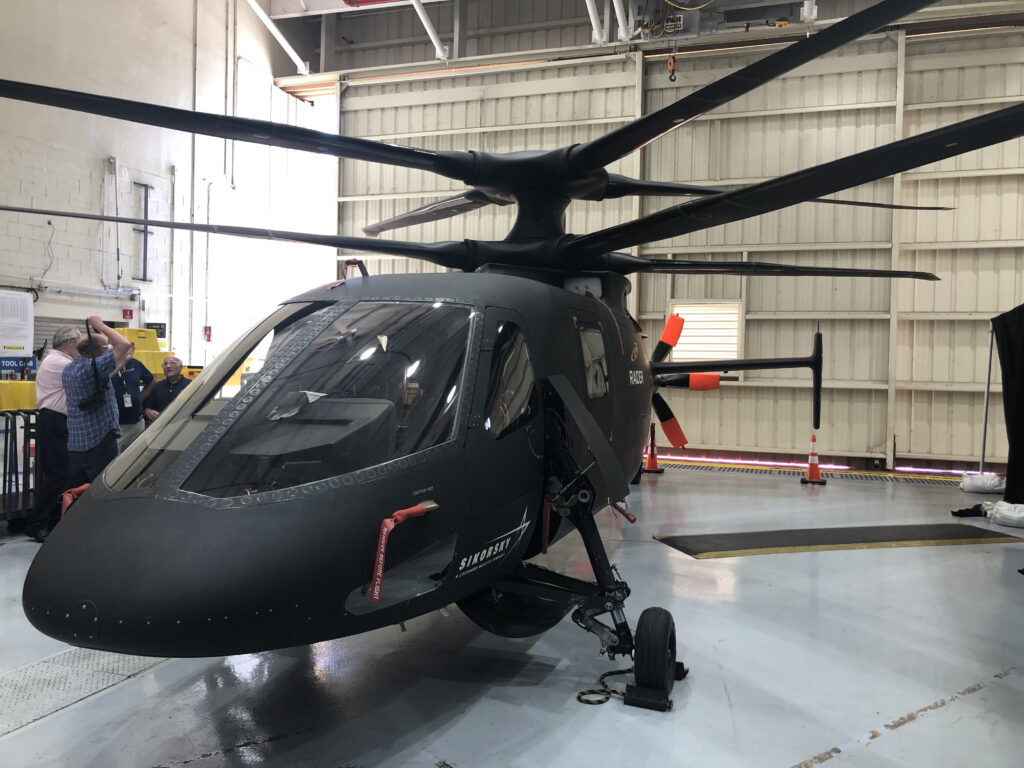
The surviving S-97 Raider prototype in its hangar.
JUPITER, FL: Sikorsky has solved the software glitch in their S-97 Raider that caused a 2017 accident, company officials told visiting reporters here, and the problem that totaled one of their two prototypes cannot reoccur. Their surviving test aircraft has flown at sustained speeds of 238 mph (207 knots), they added, which means it already meets the Army’s speed requirement for its new scout, the Future Attack Reconnaissance Aircraft.
The S-97 can reach such speeds in large part because of its dual rotors, one rotating on top of the other on the same axis (coaxial) — but the 2017 accident occurred when those two rotors flexed too far and collided. So if Sikorsky couldn’t fix the problem, their whole dual-rotor design would have been in doubt. But the company is confident that there is no inherent flaw in the design: Instead, they say, there was a software error that would have hamstrung any aircraft, whatever its rotor arrangement — and that error won’t happen again.
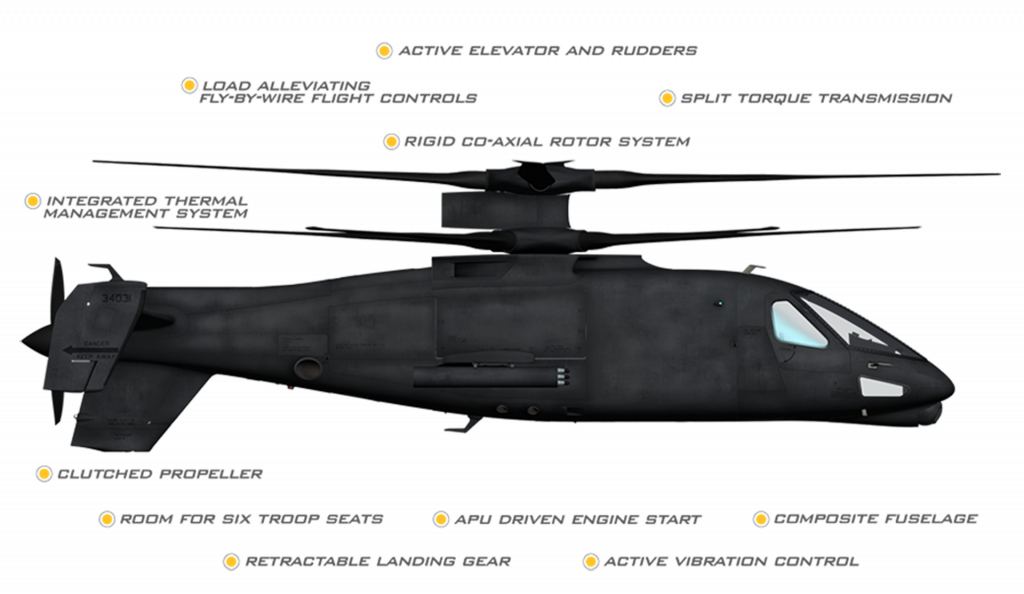
Sikorsky (Lockheed) S-97 Raider design, a leading candidate for the Army’s Future Attack Reconnaissance Aircraft (FARA)
Coaxial Complications
A conventional helicopter relies on its main rotor for all its thrust and encounters crippling drag and vibration as it approaches 200 miles per hour. (A stripped-down Westland Lynx managed almost 250 mph in a 1983 test, but for less than three minutes). But S-97, like its predecessor the X2 and its big brother the SB>1 Defiant, is a “compound helicopter” with a pusher propeller at the back for high-speed thrust.
Further, most US helicopters have a single main rotor with its torque balanced by a small tail rotor, which at high speeds causes a dangerous phenomenon called retreating blade stall. The X2 family instead have two main rotors, rotating in opposite directions, which both balances torque and cancels out the factors that lead to blade stall in a single-main-rotor design.
The thing is, those two rotors are rotating at high speeds only six feet apart. (You could make a longer mast to separate the two rotors more, as in many older Soviet designs, but that would create more drag, defeating the point of the Sikorsky design). Normally, ultra-rigid blade materials and electronic flight controls keep the blades well clear of each other.
But on August 2, 2017, the first S-97 prototype began rolling back and forth while hovering just five feet off the runway, slamming back onto the runway so hard the two rotors collided and shredded each others’ blades. The aircraft never flew again.
“We completely understand the physics” of what happened that day, Sikorsky senior test pilot Bill Fell told me and fellow reporters in the hangar at the company’s test facility here, standing next to the second S-97 prototype that’s done all the test flights since. A hidden error in the complex code of the flight control system, confused by the transition between taxiing on the ground and low-altitude flight, caused the aircraft to respond to the pilot’s inputs three times as violently as it should have.
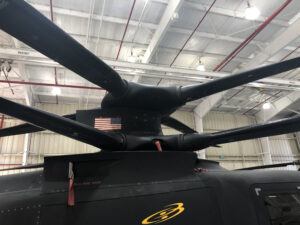
The coaxial main rotors of the S-97 spin at high speeds only six feet apart.
Sikorsky not only fixed that glitch but changed its software certification process to ensure no such problem would happen again, Fell said. And the problem was purely in the software, he emphasized: No hardware redesign was required at all.
It was an extremely abnormal, freak occurrence, added Chris Van Buiten, Sikorsky’s VP for innovations. Such a violent roll would have wrecked any helicopter, he said, compound or conventional.
But could it happen again, I asked, perhaps not during a low hover but in some other phase of flight, perhaps at high speeds or altitudes where losing both rotors would be fatal? Physics simulations suggest it might be possible, Fell conceded, but the improved software now guards against such an event by scrupulously maintaining separation between the rotors, compensating for violent maneuvers.
In fact, Fell said, the new software might be overcorrecting: It makes the blades actually move further apart when the aircraft maneuvers, which increases drag, which hinders the aircraft’s efforts to reach the high speeds the Army wants. He suspects the new safety margin will prove excessive and can be dialed down to improve speed.
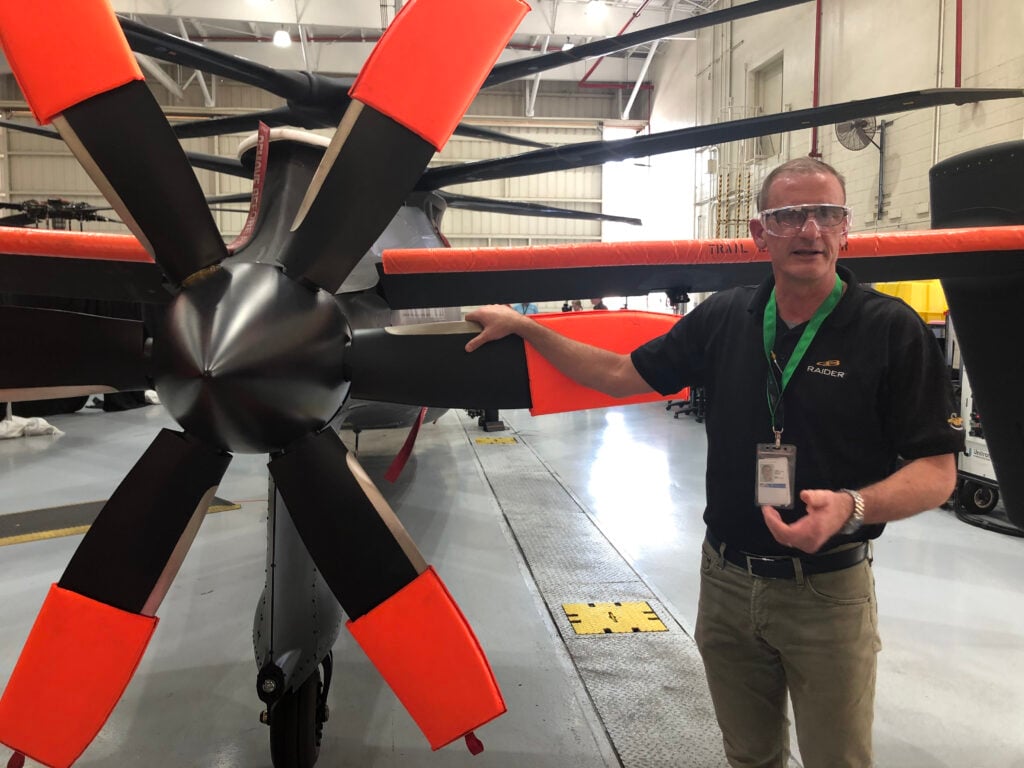
Sikorsky test pilot Bill Fell shows of the S-97’s powerful pusher propeller, essential to reach high speeds.
The Need For Speed
Why is speed so important, anyway? As the Army looks ahead to high-tech, high-intensity warfare against Russia or China, it sees a battlefield dominated by long-range missiles that can shoot conventional helicopters out of the sky and bombard their bases. That means the Army needs new aircraft that can fly longer distances — allowing them to launch from bases out of the enemy’s range — and higher speeds — so they can zip past enemy anti-aircraft batteries before they can shoot them down.
Sikorsky says the S-97 is well-suited for such missions. Now, they haven’t yet tested the real aircraft in high-speed, low-altitude “nap of the earth” flight, in which the aircraft ducks and weaves around trees and hills to avoid detection. (That’s a dangerous activity you don’t do until much later in a test program).. But they have run virtual S-97s through a VR anti-aircraft simulation.
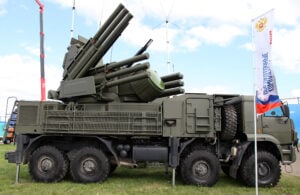
Truck-mounted version of the Russian Pantsir S1 anti-aircraft missile system (NATO reporting name SA-22 Greyhound)
There’s a real human at the trigger of the AA gun, Van Buiten explained, watching and listening for cues of an approaching aircraft from the VR simulator. It’s the roar of the rotor blades that typically tips off ground troops that a helicopter is approaching, especially the tail rotor — but the S-97 doesn’t have a tail rotor: Instead it has a pusher propeller, which is much quieter, and which can be switched off entirely for even quieter (if slower) flight. So, in test after test, Van Buiten said, the AA gunners don’t hear it coming until it’s very close, at which point it zooms past much faster than a regular helicopter, giving the gunners very little time to engage. As a result, he said, the simulations show a roughly 75 percent reduction in the number of hits.
Now, this simulation models a manually operated anti-aircraft gun, not a computer-controlled missile battery. But however sophisticated your opposition, it’s still beneficial to fly low, quiet, and fast, so they can’t hear or see you coming until the last moment as you rush past, minimizing their time to engage.
How fast is the S-97? Sikorsky is still pushing the test program, so they don’t know for sure. The Army wants the Future Attack Reconnaissance Aircraft to fly at sustained speeds of at least 207 mph (180 knots), and S-97 hits that mark in “almost every flight now,” Fell said. The Army’s objective speed is 236 mph (205 knots): S-97 has already managed 238 mph (207 knots), and it’ll go higher before testing is done.
“We’re continuing to make advances… every time we go out and fly,” Fell said.
Will S-97 meet the threshold Sikorsky originally set for itself, 253 mph (220 knots)? Maybe not, Fell acknowledged, depending on how the company can resolve some unexpected issues with drag.
But the S-97 is just an early prototype, not the Sikorsky’s final design for FARA. The company has an Army contract to develop that design, competing against archrival Bell, Boeing, Karem, and a team of AVX and L3. Two contenders will get awards in March to build full-up competitive prototypes. That aircraft, the company says confidently, will have the refined aerodynamics to break the 250 mph record set over three decades ago.
In a ‘world first,’ DARPA project demonstrates AI dogfighting in real jet
“The potential for machine learning in aviation, whether military or civil, is enormous,” said Air Force Col. James Valpiani. “And these fundamental questions of how do we do it, how do we do it safely, how do we train them, are the questions that we are trying to get after.”


























